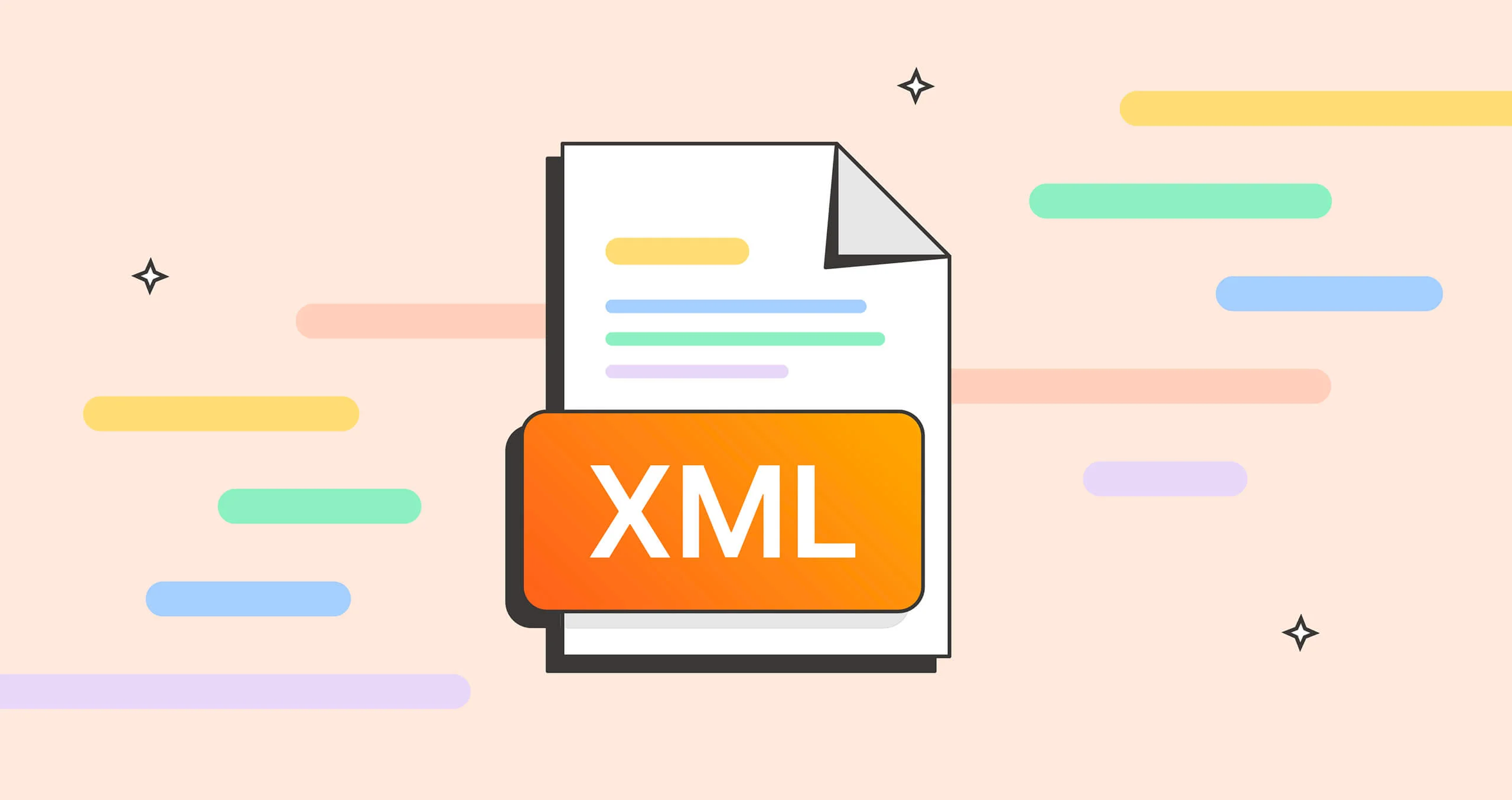 Backend Development
Backend Development
 XML/RSS Tutorial
XML/RSS Tutorial
 How to Build a Custom RSS Feed for a Content Management System
How to Build a Custom RSS Feed for a Content Management System
How to Build a Custom RSS Feed for a Content Management System
Jul 30, 2025 am 12:54 AMUnderstand that an RSS feed requires a root

Building a custom RSS feed for a content management system (CMS) is a great way to give users, aggregators, or third-party platforms access to your latest content in a standardized format. Whether you're using a custom-built CMS or extending a platform like WordPress, Drupal, or Laravel, the process follows similar principles. Here’s how to do it right.

1. Understand What an RSS Feed Needs
RSS (Really Simple Syndication) is an XML-based format used to publish frequently updated content like blog posts, news articles, or podcasts. A valid RSS feed must include:
- A root
<rss></rss>element with version2.0 - A
<channel></channel>element containing metadata - Required channel elements:
-
<title></title>– Name of your site or feed -
<link>– URL to your website -
<description></description>– Brief summary of the feed
-
- One or more
<item></item>elements for each piece of content, each with:<title></title><link>-
<description></description>(or<encoded></encoded>for full HTML) -
<pubdate></pubdate>in RFC 822 format - Optional:
<guid></guid>(unique identifier for the item)
Example snippet:

<rss version="2.0">
<channel>
<title>My CMS Blog</title>
<link>https://example.com</link>
<description>Latest updates from our blog</description>
<item>
<title>First Post</title>
<link>https://example.com/posts/first</link>
<description>This is the summary of the first post.</description>
<pubDate>Mon, 01 Apr 2025 12:00:00 GMT</pubDate>
<guid>https://example.com/posts/first</guid>
</item>
</channel>
</rss>2. Set Up a Dedicated Feed Endpoint
You’ll need a route or URL that serves the RSS XML (e.g., /feed or /rss.xml).
In a custom CMS (PHP example):
// feed.php
header('Content-Type: text/xml; charset=UTF-8');
echo '<?xml version="1.0" encoding="UTF-8"?>';
?>
<rss version="2.0">
<channel>
<title>My CMS Feed</title>
<link>https://example.com</link>
<description>Recent content from our site</description>
<pubDate><?php echo date('r'); ?></pubDate>
<language>en-us</language>
<?php
// Fetch latest published posts (adjust query to your DB structure)
$posts = $db->query("SELECT title, slug, excerpt, created_at FROM posts WHERE published = 1 ORDER BY created_at DESC LIMIT 20");
while ($post = $posts->fetch(PDO::FETCH_ASSOC)) {
$link = "https://example.com/posts/" . urlencode($post['slug']);
$title = htmlspecialchars($post['title']);
$description = htmlspecialchars($post['excerpt']);
$pubDate = date('r', strtotime($post['created_at']));
$guid = $link;
?>
<item>
<title><?php echo $title; ?></title>
<link><?php echo $link; ?></link>
<description><?php echo $description; ?></description>
<pubDate><?php echo $pubDate; ?></pubDate>
<guid><?php echo $guid; ?></guid>
</item>
<?php } ?>
</channel>
</rss>Make sure to:
- Set the correct
Content-Typeheader - Escape output with
htmlspecialchars()to prevent XML errors - Use proper date formatting (
date('r')gives RFC 822)
3. Enhance Your Feed with Additional Fields
You can enrich your feed with optional but useful elements:
- Full content: Use
<content:encoded>(requires namespace) - Categories:
<category>Technology</category> - Author:
<author>john@example.com (John Doe)</author> - Image: Add a
<image>inside<channel>for a feed icon - Custom namespaces: For podcasting or media (e.g.,
media:thumbnail)
To include full HTML content:
<rss version="2.0" xmlns:content="http://purl.org/rss/1.0/modules/content/">
...
<item>
<title>Post with Images</title>
<content:encoded><![CDATA[<p>This post has <img src="/static/imghw/default1.png" data-src="..." class="lazy"/ alt="How to Build a Custom RSS Feed for a Content Management System" > and formatting.</p>]]></content:encoded>
</item>
</rss>4. Optimize and Maintain the Feed
- Cache the feed: Generating XML on every request can be expensive. Cache the output for 15–60 minutes.
- Limit items: 10–20 recent items are enough. Avoid bloating the feed.
- Validate it: Use tools like W3C Feed Validation Service to check correctness.
- Ping aggregators: After updating, notify services like Google or Bloglines (optional but helpful for indexing).
-
Support multiple feeds: Offer filtered feeds (e.g.,
/feed?category=tech) or per-author feeds.
5. Integrate with Popular CMS Platforms (Optional)
If you're using a known CMS, leverage built-in tools:
-
WordPress: Use
WP_Queryin a customfeed-rss2.phptemplate or hook intodo_feed_rss2. - Drupal: Use the core Views module to create an RSS display.
-
Laravel: Define a route that returns a
Response::view('feed.rss', $data)->header('Content-Type', 'text/xml').
Even with these systems, you might still want a custom feed for specific content types or formatting.
Building a custom RSS feed isn’t complex, but attention to detail ensures compatibility and reliability. Stick to the RSS 2.0 spec, escape your data, and test thoroughly. Once live, many users and tools will appreciate the open access to your content.
Basically, it's just dynamic XML with care.
The above is the detailed content of How to Build a Custom RSS Feed for a Content Management System. For more information, please follow other related articles on the PHP Chinese website!

Hot AI Tools

Undress AI Tool
Undress images for free

Undresser.AI Undress
AI-powered app for creating realistic nude photos

AI Clothes Remover
Online AI tool for removing clothes from photos.

Clothoff.io
AI clothes remover

Video Face Swap
Swap faces in any video effortlessly with our completely free AI face swap tool!

Hot Article

Hot Tools

Notepad++7.3.1
Easy-to-use and free code editor

SublimeText3 Chinese version
Chinese version, very easy to use

Zend Studio 13.0.1
Powerful PHP integrated development environment

Dreamweaver CS6
Visual web development tools

SublimeText3 Mac version
God-level code editing software (SublimeText3)

Hot Topics
 Why XML Is Still Relevant: Exploring Its Strengths for Data Exchange
Jul 05, 2025 am 12:17 AM
Why XML Is Still Relevant: Exploring Its Strengths for Data Exchange
Jul 05, 2025 am 12:17 AM
XMLremainsrelevantduetoitsstructuredandself-describingnature.Itexcelsinindustriesrequiringprecisionandclarity,supportscustomtagsandschemas,andintegratesdatavianamespaces,thoughitcanbeverboseandresource-intensive.
 XML Basic Rules: Ensuring Well-Formed and Valid XML
Jul 06, 2025 am 12:59 AM
XML Basic Rules: Ensuring Well-Formed and Valid XML
Jul 06, 2025 am 12:59 AM
XMLmustbewell-formedandvalid:1)Well-formedXMLfollowsbasicsyntacticruleslikeproperlynestedandclosedtags.2)ValidXMLadherestospecificrulesdefinedbyDTDsorXMLSchema,ensuringdataintegrityandconsistencyacrossapplications.
 XML in Software Development: Use Cases and Reasons for Adoption
Jul 10, 2025 pm 12:14 PM
XML in Software Development: Use Cases and Reasons for Adoption
Jul 10, 2025 pm 12:14 PM
XMLischosenoverotherformatsduetoitsflexibility,human-readability,androbustecosystem.1)Itexcelsindataexchangeandconfiguration.2)It'splatform-independent,supportingintegrationacrossdifferentsystemsandlanguages.3)XML'sschemavalidationensuresdataintegrit
 XML: Does encoding affects the well-formed status?
Jul 03, 2025 am 12:29 AM
XML: Does encoding affects the well-formed status?
Jul 03, 2025 am 12:29 AM
XMLencodingdoesaffectwhetheradocumentisconsideredwell-formed.1)TheencodingmustbecorrectlydeclaredintheXMLdeclaration,matchingtheactualdocumentencoding.2)OmittingthedeclarationdefaultstoUTF-8orUTF-16,whichcanleadtoissuesifthedocumentusesadifferentenco
 XML: Why are namespaces needed?
Jul 07, 2025 am 12:29 AM
XML: Why are namespaces needed?
Jul 07, 2025 am 12:29 AM
XMLnamespacesareessentialforavoidingnamingconflictsinXMLdocuments.Theyuniquelyidentifyelementsandattributes,allowingdifferentpartsofanXMLdocumenttocoexistwithoutissues:1)NamespacesuseURIsasuniqueidentifiers,2)Consistentprefixusageimprovesreadability,
 Well-Formed XML: Understanding the Essential Rules for Valid XML
Jul 02, 2025 am 12:02 AM
Well-Formed XML: Understanding the Essential Rules for Valid XML
Jul 02, 2025 am 12:02 AM
AnXMLdocumentiswell-formedifitadherestospecificrules:1)ithasasinglerootelement,2)alltagsareproperlynested,3)everyopeningtaghasacorrespondingclosingtag,4)itiscase-sensitive,and5)specialcharactersareproperlyescaped.TheserulesensuretheXMLisuniversallyun
 The Ultimate Guide to XML Schema: Creating Valid and Reliable XML
Jul 08, 2025 am 12:09 AM
The Ultimate Guide to XML Schema: Creating Valid and Reliable XML
Jul 08, 2025 am 12:09 AM
XMLSchemacanbeeffectivelyusedtocreatevalidandreliableXMLbyfollowingthesesteps:1)DefinethestructureanddatatypesofXMLelements,2)Userestrictionsandfacetsfordatavalidation,3)Implementcomplextypesandinheritanceformanagingcomplexity,4)Modularizeschemastoim
 The Key Characteristics of a Well-Formed XML Document
Jul 12, 2025 am 01:22 AM
The Key Characteristics of a Well-Formed XML Document
Jul 12, 2025 am 01:22 AM
Awell-formedXMLdocumentadherestospecificrulesensuringcorrectstructureandparseability.1)Itstartswithaproperdeclarationlike.2)Elementsmustbecorrectlynestedwitheachopeningtaghavingacorrespondingclosingtag.3)Attributesmustbeuniquewithintheirelementandenc





